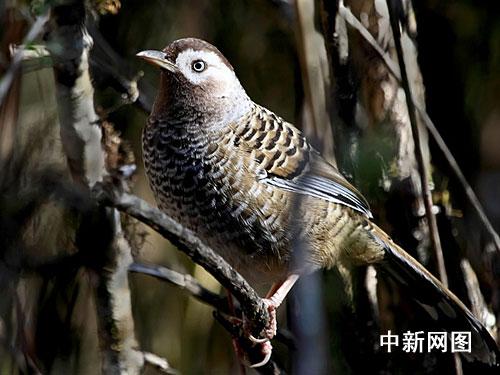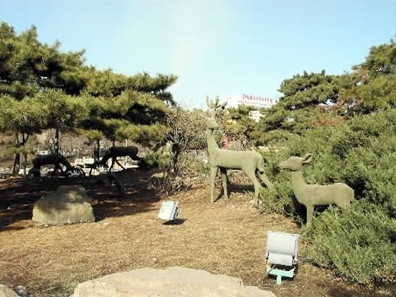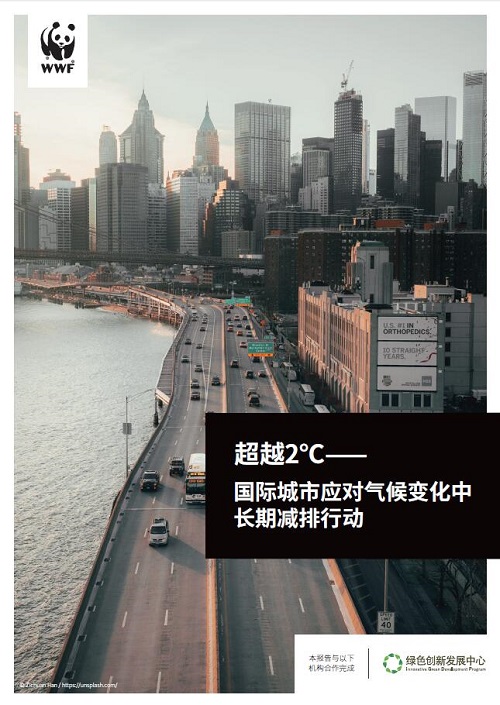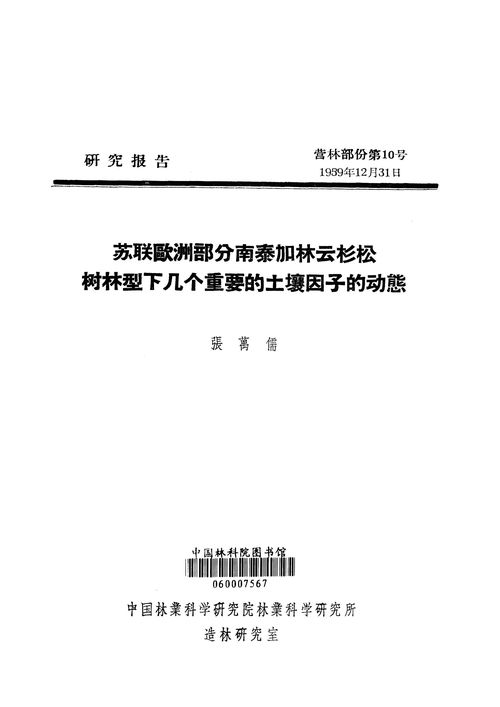
近20年来欧洲城市生物多样性研究进展
编号
lyqk010024


中文标题
近20年来欧洲城市生物多样性研究进展


作者单位
中国林业科学研究院林业研究所/国家林业和草原局城市森林研究中心 北京 100091


期刊名称
中国城市林业


年份
2022


卷号
20


期号
6


栏目名称
专题策划:城市生物多样性


中文摘要
城市生物多样性是生物多样性保护和城市生态建设的重要内容。为全面了解欧洲城市生物多样性的研究进展,进而为我国城市生物多样性研究和开展国际合作提供参考,文章利用Web of Science数据库进行检索,获取1998年以来欧洲各国有关城市生物多样性的相关研究文献共554篇。通过对文献内容的整理分析发现:城市生物多样性研究在欧洲发达国家成果颇丰,且研究对象涉及植物、昆虫、鸟类以及哺乳动物多个生物类群;不同生物类群受城市环境的影响存在差异,植物多样性和传粉昆虫多样性更可能受到城市环境的积极影响,而甲虫、鸟类和哺乳动物在城市中多样性较低;人为活动与栖息地质量是影响城市生物多样性的主要因素,此外,城市外来物种的增加以及专化种的减少可能导致生物同质化。基于文献分析结果和生物多样性保护工作实践,指出未来城市生物多样性研究应该更加趋向于多尺度、多领域、多学科的交叉,以及科学研究成果的实践落地性和指导性。


基金项目
国家重点研发计划政府间国际科技创新合作重点专项项目:中欧绿色城镇化的城市森林应对关键技术研究(2021YFE0193200)和欧盟地平线2020计划项目中欧城市可持续发展的城市森林应对方案研究、分享与管理(CLEARINGHOUSE)


英文标题
Urban Biodiversity Research Progress in Europe over the Last 20 Years


作者英文名
Zhang Shujing, Wang Cheng


单位英文名
Research Institute of Forestry, Chinese Academy of Forestry, Urban Forest Research Center, National Forestry and Grassland Administration, Beijing 100091, China


英文摘要
Urban biodiversity is a vital part of biodiversity conservation and urban ecological development. In order to understand the Europe's research progress in urban biodiversity and provide a reference for China's research and international cooperation on urban biodiversity, this paper obtains from the Web of Science database a total of 554 papers concerning urban biodiversity from Europe since 1998. Through the literature review, it is found that the developed European countries have achieved much in the research on urban biodiversity, involving a variety of biological groups such as plants, insects, birds and mammals. The urban environment has different effects on biological groups, and plant diversity and pollinator diversity are positively affected by urban environments, while beetle, bird and mammal diversity are low in urban areas. Human activities and habitat quality are the major factors affecting urban biodiversity. In addition, the increase of alien species and the decrease of specialized species may lead to biological homogenization. Based on the results of literature review and biodiversity conservation practices, we conclude that the future urban biodiversity research tend to be multi-scale, multi-field, multi-disciplinary and practical.


英文关键词
city;biodiversity;multi-taxon;urbanization gradient;homogenization;Europe


起始页码
15


截止页码
24


投稿时间
2022/10/17


作者简介
张淑菁(2000-),女,硕士生,研究方向为城市森林生物多样性。E-mail:18811788517@163.com


通讯作者介绍
王成(1967-),男,研究员,博士生导师,研究方向为城市林业与城市生态。E-mail:wch8361@163.com


E-mail
wch8361@163.com


DOI
10.12169/zgcsly.2022.10.17.0002


参考文献
[1] FENOGLIO M S, CALVINO A, GONZALEZ E, et al.Urbanisation drivers and underlying mechanisms of terrestrial insect diversity loss in cities[J].Ecological Entomology, 2021, 46(4):757-771.
[2] KNAPP S, ARONSON M F J, CARPENTER E, et al.A research agenda for urban biodiversity in the global extinction crisis[J].Bioscience, 2021, 71(3):268-279.
[3] 吴澜, 吴泽民.欧洲城市森林及城市林业[J].中国城市林业, 2008, 6(3):74-77.
[4] 吴泽民.城市景观中的树木与森林:结构格局与生态功能[M].北京:中国林业出版社, 2011.
[5] KOWARIK I.Novel urban ecosystems, biodiversity, and conservation[J].Environmental Pollution, 2011, 159(8/9):1974-1983.
[6] CONCEPCIÓN E D, GÖTZENBERGER L, NOBIS M P, et al.Contrasting trait assembly patterns in plant and bird communities along environmental and human-induced land-use gradients[J].Ecography, 2016, 39:1-11.
[7] MATTHIES S A, RVTER S, SCHAARSCHMIDT F, et al.Determinants of species richness within and across taxonomic groups in urban green spaces[J].Urban Ecosystems, 2017, 20:897-909.
[8] VEGA K A, KVFFER C.Promoting wildflower biodiversity in dense and green cities:the important role of small vegetation patches[J].Urban Forestry and Urban Greening, 2021, 62(4):127165.
[9] SALINITRO M, ALESSANDRINI A, ZAPPI A, et al.Floristic diversity in different urban ecological niches of a southern European city[J].Scientific Reports, 2018, 8(1):15110.
[10] SEHRT M, BOSSDORF O, FREITAG M, et al.Less is more!Rapid increase in plant species richnessafter reduced mowing in urban grasslands[J].Basic and Applied Ecology, 2020, 42:47-53.
[11] WITTIG R, BECKER U.The spontaneous flora around street trees in cities-a striking example for the worldwide homogenization of the flora of urban habitats[J].Flora, 2010, 205(10):704-709.
[12] KNAPP S, KVHN I, SCHWEIGER O, et al.Challenging urban species diversity:contrasting phylogenetic patterns across plant functional groups in Germany[J].Ecology Letters, 2008, 11(10):1054-1064.
[13] THEODOROU P, HERBST S C, KAHNT B, et al.Urban fragmentation leads to lower floral diversity, with knock-on impacts on bee biodiversity[J].Scientific Reports, 2020, 10:21756.
[14] 高光彩, 付必谦.步甲作为指示生物的研究进展[J].昆虫知识, 2009, 46(2):216-222.
[15] NIEMELÄ J, KOTZE J, ASHWORTH A, et al.The search for common anthropogenic impacts on biodiversity:a global network[J].Journal of Insect Conservation, 2000, 4(1):3-9.
[16] MAGURA T, LÖVEI G L, TÓTHMÉRÉSZ B.Time-consistent rearrangement of carabid beetle assemblages by an urbanisation gradient in Hungary[J].Acta Oecologica, 2008, 34(2):233-243.
[17] ELEK Z, LÖVEI G L.Patterns in ground beetle (Coleoptera:Carabidae) assemblages along an urbanisation gradient in Denmark[J].Acta Oecologica, 2007, 32(1):104-111.
[18] VERGNES A, PELLISSIER V, LEMPERIERE G, et al.Urban densification causes the decline of ground-dwelling arthropods[J].Biodiversity and Conservation, 2014, 23(8):1859-1877.
[19] MODY K, LERCH D, MVLLER A K, et al.Flower power in the city:replacing roadside shrubs by wildflower meadows increases insect numbers and reduces maintenance costs[J].Plos One, 2020, 15(6):e0234327.
[20] VERGNES A, CHANTEPIE S, ROBERT A, et al.Are urban green spaces suitable for woodland carabids?First insights from a short-term experiment[J].Journal of Insect Conservation, 2013, 17(4):671-679.
[21] MAGURA T, TÓTHMÉRÉSZ B, MOLNÁR T.Changes in carabid beetle assemblages along an urbanisation gradient in the city of Debrecen, Hungary[J].Landscape Ecology, 2004, 19:747-759.
[22] BELSKAYA E, ZOLOTAREV M, ZINOVYEV E.Carabidae assemblages in pine forests with different recreation regimes within and outside a megalopolis[J].Urban Ecosystems, 2020, 23(3):27-38.
[23] KNOP E.Biotic homogenization of three insect groups due to urbanization[J].Global Change Biology, 2016, 22(1):228-236.
[24] DANIELS B, JEDAMSKI J, OTTERMANNS R, et al.A plan bee for cities:Pollinator diversity and plant-pollinator interactions in urban green spaces[J].Plos One, 2020, 15(7):e0235492.
[25] BALDOCK K C R.Opportunities and threats for pollinator conservation in global towns and cities[J].Current Opinion in Insect Science, 2020, 38:63-71.
[26] THEODOROU P, RADZEVIČIŪTō R, LENTENDU G, et al.Urban areas as hotspots for bees and pollination but not a panacea for all insects[J].Nature Communications, 2020, 11(1):576.
[27] BANASZAK-CIBICKA W, DYLEWSKI L.Species and functional diversity-a better understanding of the impact of urbanization on bee communities[J].Science of the Total Environment, 2021, 774(1):145729.
[28] BERTHON K, MEYER S T, THOMAS F, et al.Small-scale habitat conditions are more important than site context for influencing pollinator visitation[J].Frontiers in Ecology and Evolution, 2021, 9:703311.
[29] WENZEL A, GRASS I, BELAVADI V V, et al.How urbanization is driving pollinator diversity and pollination-a systematic review[J].Biological Conservation, 2020, 241:108321.
[30] SALISBURY A, ARMITAGE J, BOSTOCK H, et al.Enhancing gardens as habitats for flower-visiting aerial insects (pollinators):should we plant native or exotic species?[J].Journal of Applied Ecology, 2015, 52(5):1156-1164.
[31] BATÁRY P, KURUCZ K, SUAREZ-RUBIO M, et al.Non-linearities in bird responses across urbanization gradients:a meta-analysis[J].Global Change Biology, 2018, 24(3):1046-1054.
[32] CONCEPCIÓN E D, OBRIST M K, MORETTI M, et al.Impacts of urban sprawl on species richness of plants, butterflies, gastropods and birds:not only built-up area matters[J].Urban Ecosystems, 2016, 19:225-242.
[33] MANTON M, ANGELSTAM P, NAUMOV V.Effects of land use intensification on avian predator assemblages:a comparison of landscapes with different histories in Northern Europe[J].Diversity, 2019, 11(5):70.
[34] SCHVTZ C, SCHULZE C H.Functional diversity of urban bird communities:effects of landscape composition, green space area and vegetation cover[J].Ecology and Evolution, 2015, 5(22):5230-5239.
[35] BEAUGEARD E, BRISCHOUX F, ANGELIER F.Green infrastructures and ecological corridors shape avian biodiversity in a small French city[J].Urban Ecosystems, 2021, 24(3):549-560.
[36] SANDSTRÖM U G, ANGELSTAM P, MIKUSIHSKI G.Ecological diversity of birds in relation to the structure of urban green space[J].Landscape and Urban Planning, 2006, 77:39-53.
[37] DE GROOT M, FLAJŠMAN K, MIHELIČ T, et al.Green space area and type affect bird communities in a South-eastern European city[J].Urban Forestry and Urban Greening, 2021, 63:127212.
[38] CANEDOLI C, MANENTI R, PADOA-SCHIOPPA E.Birds biodiversity in urban and periurban forests:environmental determinants at local and landscape scales[J].Urban Ecosystems, 2018, 21(4):779-793.
[39] HEYMAN E.Clearance of understory in urban woodlands:Assessing impact on bird abundance and diversity[J].Forest Ecology and Management, 2010, 260(1):125-131.
[40] DAVIES Z G, FULLER R A, LORAM A, et al.A national scale inventory of resource provision for biodiversity within domestic gardens[J].Biological Conservation, 2008, 142(4):761-771.
[41] BURT S A, VOS C J, BUIJS J A, et al.Nutritional implications of feeding free-living birds in public urban areas[J].Journal of Animal Physiology and Animal Nutrition, 2020, 105(13):385-393.
[42] BERNAT-PONCE E, FERRER D, GIL-DELGADO J A, et al.Effect of replacing surface with underground rubbish containers on urban House Sparrows Passer domesticus[J].Urban Ecosystems, 2022, 25(1):121-132.
[43] BORDER J A, NEWSON S E, WHITE D C J, et al.Predicting the likely impact of urbanisation on bat populations using citizen science data, a case study for Norfolk, UK[J].Landscape and Urban Planning, 2017, 162:44-55.
[44] GILI F, NEWSON S E, GILLINGS S, et al.Bats in urbanising landscapes:habitat selection and recommendations for a sustainable future[J].Biological Conservation, 2020, 241:108343.
[45] TAUCHER A L, GLOOR S, DIETRICH A, et al.Decline in distribution and abundance:urban hedgehogs under pressure[J].Animals, 2020, 10(9):1606.
[46] TARABON S, BERGōS L, DUTOIT T, et al.Maximizing habitat connectivity in the mitigation hierarchy.A case study on three terrestrial mammals in an urban environment[J].Journal of Environmental Management, 2019, 243:340-349.
[47] BOUYER Y, GERVASI V, PONCIN P, et al.Tolerance to anthropogenic disturbance by a large carnivore:the case of Eurasian lynx in south-eastern Norway[J].Animal Conservation, 2015, 18(3):271-278.
[48] BAKER P J, HARRIS S.Urban mammals:what does the future hold?An analysis of the factors affecting patterns of use of residential gardens in Great Britain[J].Mammal Review, 2007, 37(4):297-315.
[49] TOLHURST B A, BAKER R J, CAGNACCI F, et al.Spatial aspects of gardens drive ranging in urban foxes (Vulpes vulpes):the resource dispersion hypothesis revisited[J].Animals, 2020, 10(7):1167.
[50] ZIEGE M, BRIX M, SCHULZE M, et al.From multifamily residences to studio apartments:shifts in burrow structures of European rabbits along a rural-to-urban gradient[J].Journal of Zoology, 2015, 295(4):286-293.
[51] LINTOTT P R, FUENTES-MONTEMAYOR E, GOULSON D, et al.Testing the effectiveness of surveying techniques in determining bat community composition within woodland[J].Wildlife Research, 2013, 40:675-684.
[52] VILLARROYA-VILLALBA L, CASANELLES-ABELLA J, MORETTI M, et al.Response of bats and nocturnal insects to urban green areas in Europe[J].Basic and Applied Ecology, 2021, 51(4):59-70.
[53] MAGURA T, KISS E, LÖVEI G L.No consistent diversity patterns in terrestrial mammal assemblages along rural-urban forest gradients[J].Basic and Applied Ecology, 2021, 52(4):38-45.
[54] LOPUCKI R, MRÓZ I, BERLIHSKI L, et al.Effects of urbanization on small-mammal communities and the population structure of synurbic species:an example of a medium-sized city[J].Canadian Journal of Zoology, 2013, 91(8):554-561.
[55] BERGER A, LOZANO B, BARTHEL L M F, et al.Moving in the dark-evidence for an influence of artificial light at night on the movement behaviour of European Hedgehogs (Erinaceus europaeus)[J].Animals, 2020, 10(8):1306.
[56] EUROPEAN COMMISSION.The EU biodiversity strategy to 2020[Z].Luxembourg:Publications Office of the European Union.2011.
[57] EUROPEAN ENVIRONMENT AGENCY.Spatial Analysis of Green Infrastructure in Europe[R].Luxembourg:Publications Office of the European Union, 2014.
[58] SWISS CONFEDERATION. Swiss Biodiversity Strategy[Z].Bern:Federal Office for the Environment, 2012.
[59] SCHEWENIUS M, MCPHEARSON T, ELMQVIST T. Opportunities for increasing resilience and sustainability of urban social-ecological systems:insights from the URBES and the cities and biodiversity outlook projects[J].Ambio, 2014, 43(4):434-444.
[60] AGUILERA G, EKROOS J, PERSSON A S, et al.Intensive management reduces butterfly diversity over time in urban green spaces[J].Urban Ecosystems, 2019, 22(4):335-344.
[61] MVLLER A, BØCHER P K, FISCHER C, et al.‘Wild’ in the city context:do relative wild areas offer opportunities for urban biodiversity?[J].Landscape and Urban Planning, 2018, 170:256-265.
[62] 王光美, 杨景成, 姜闯道, 等.生物同质化研究透视[J].生物多样性, 2009, 17(2):117-126.
[63] KVHN I, KLOTZ S.Urbanization and homogenization-comparing the floras of urban and rural areas in Germany[J].Biological Conservation, 2006, 127(3):292-300.
[64] BRUNBJERG A K, HALE J D, BATES A J, et al.Can patterns of urban biodiversity be predicted using simple measures of green infrastructure[J].Urban Forestry and Urban Greening, 2018, 32:143-153.
[65] NIELSEN A B, VAN DEN BOSCH M, MARUTHAVEERAN S, et al.Species richness in urban parks and its drivers:A review of empirical evidence[J].Urban Ecosystems, 2014, 17(1):305-327.
[66] CAVIN J S.Beyond prejudice:Conservation in the city.a case study from Switzerland[J].Biological Conservation, 2013, 166:84-89.
[67] CARRUS G, SCOPELLITI M, LAFORTEZZA R, et al.Go greener, feel better?The positive effects of biodiversity on the well-being of individuals visiting, urban and peri-urban green areas[J].Landscape and Urban Planning, 2015, 134:221-228.
[68] SMITH R M, THOMPSON K, HODGSON J G, et al.Urban domestic gardens (IX):composition and richness of the vascular plant flora, and implications for native biodiversity[J].Biological Conservation, 2006, 129(3):312-322.


PDF全文
浏览全文


-
相关记录
更多
- 植物花部特征与访花昆虫互作关系研究进展 2023
- 城市鸟类群落与绿地关系研究进展 2022
- 国内外混交林研究进展 2022
- 遥感技术在森林树种多样性监测中的应用研究进展 2022
- 九龙峰自然保护区不同森林类型乔木层树种组成及其动态变化 2022
- 城市昆虫传粉生境营建研究进展及思考 2024
 打印
打印







